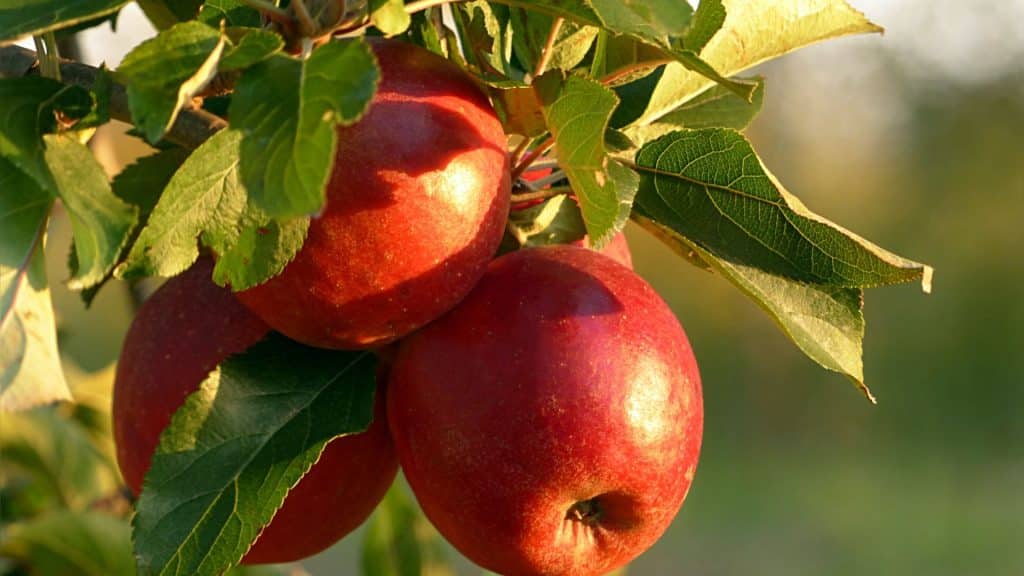Pruning an apple tree isn’t just about snipping a few branches. Done right, it improves airflow, boosts fruit production, and extends the life of the tree. Done poorly, it can stunt growth and leave your tree vulnerable to disease. If you’re searching for the most effective apple tree pruning services, it’s crucial to understand what sets expert care apart from average jobs.
Many homeowners assume all pruning is the same. But apple trees have specific needs based on age, season, and the local climate. When these factors are ignored, even well-intentioned pruning can do more harm than good. Whether you’ve got a backyard tree that’s looking a bit wild or you’re aiming for a bumper crop, proper technique makes all the difference.
This blog unpacks the most common mistakes, the impact of over-pruning, and how trained professionals deliver results that DIY often can’t match. If you want healthier trees and bigger yields, read on to learn what matters most.
What problems can poor apple tree pruning services cause?
Sloppy or uninformed pruning can cause more headaches than you’d expect. It’s not just about appearance—pruning directly impacts the tree’s health and fruiting cycle.
- Excessive cutting can lead to reduced fruit yield, especially in younger trees still establishing structure.
- Removing too many limbs opens the tree to sunburn, which damages bark and underlying tissues.
- Topping trees (cutting main stems flat) disrupts natural growth and invites decay or dieback.
Beyond growth concerns, there’s also the risk of pests and fungal infections. Open cuts, if made incorrectly, leave trees more vulnerable to disease.
- Insects often enter through jagged wounds left by dull tools.
- Fungal spores, especially in humid conditions, spread through improperly sealed cuts.
- Lack of airflow due to crowded branches encourages mildew and rot.
It doesn’t take long for these issues to snowball. And when your apple tree is already showing signs of stress, bad pruning can be the nail in the coffin.
Why is the inadequate trimming of apple trees a frequent issue?
Apple trees are unique—they require shaping, not just thinning. But many property owners and even some landscapers treat all trees the same.
- Lack of training on fruit tree biology leads to incorrect branch selection.
- Rushed jobs often skip essential steps like assessing tree age and shoot positioning.
- Some operators trim only the canopy without managing interior limbs that block airflow.
In suburban Sydney, homeowners may only trim when branches start hitting fences or overhead lines. But this reactive approach misses the point of pruning entirely.
- Overgrown trees become top-heavy and structurally weak, especially during storms.
- Fruiting zones shift too high, making harvesting awkward or unsafe.
- Fruit quality declines when branches don’t get enough sun or space.
If you’ve ever seen an apple tree growing tall but producing small or patchy fruit, poor trimming habits are likely to blame. It’s a common trap—but one that can be fixed.
How can over-pruning apple trees lead to long-term damage?
While trimming too little is risky, over-pruning is even worse. You may not notice the damage straight away, but the long-term effects can be hard to reverse.
- Excessive limb removal reduces the tree’s leaf surface, which limits photosynthesis.
- The tree spends energy regrowing branches instead of producing fruit.
- Sudden exposure to direct sun can burn previously shaded bark, especially on mature limbs.
Over-pruning also encourages suckers—those thin vertical shoots that grow rapidly but fruit poorly.
- These fast-growing stems drain energy from productive branches.
- Left unchecked, they make the tree bushier and harder to manage the following year.
Consider the lifecycle of an apple tree: each year’s cut influences the next three. One poorly timed or aggressive trim can trigger years of poor growth.
That’s why comprehensive apple tree care solutions matter—techniques must be customised, not improvised.
How do professional apple tree pruning services help restore tree health?
Good pruning isn’t about hacking back growth—it’s a careful balance of science and skill. Professional services bring a structured, tailored approach to every tree.
- Tree age and variety are considered before any cuts are made.
- Growth history is analysed to guide pruning shape and direction.
- Safety and access are factored into each stage, reducing risk.
Experienced arborists don’t just remove branches—they restore airflow, balance weight, and improve fruiting potential.
- Expert fruit tree pruning in Sydney focuses on shaping for sunlight and stability.
- Strategic thinning encourages better bud formation next season.
- Old wood that’s no longer productive is removed to channel energy elsewhere.
Here’s how proper pruning compares to rushed or DIY jobs:
| Factor | Professional Services | Basic/DIY Trimming |
| Assessment Before Cutting | Yes – Full health check | No – Cuts based on shape |
| Cut Quality | Clean, angled, sealed | Often jagged or flat |
| Pest/Disease Awareness | High – Preventative steps | Low Risks are often missed |
| Tree-Specific Technique | Custom per tree | General pruning only |
| Seasonal Planning | Yes – Aligned to growth cycle | Often random or reactive |
Professional apple tree trimming doesn’t just improve how a tree looks—it extends its productive years. It’s the difference between a short fix and long-term success.
What techniques do expert pruning apple tree services use for optimal growth?
High-quality pruning follows proven horticultural strategies, not guesswork. Trained specialists use specific cuts and methods for structure, fruiting, and longevity.
- Heading cuts reduce branch length to manage tree size.
- Thinning cuts remove full limbs to improve airflow and light.
- Renewal cuts eliminate old wood to stimulate fresh growth.
But technique isn’t everything. Timing and tree knowledge matter just as much.
- Young trees are pruned to establish strong frames early.
- Mature trees are shaped to balance fruit load and support limbs.
- Diseased or damaged limbs are removed first to halt the spread.
A detailed guide to apple tree trimming often starts with these principles. But professional teams adapt in real-time, based on weather, species, and site conditions.
The result? Trees that are easier to harvest, less prone to disease, and better shaped for your backyard.
When should you schedule apple tree trimming to maximise fruit yield?
Timing makes all the difference with apple trees. Prune too late and you miss bud development. Go too early, and regrowth becomes aggressive.
- In Sydney’s climate, late winter to early spring is ideal—before buds swell but after major frosts.
- Light summer trims can manage sucker growth without affecting yield.
But it’s not just the calendar that counts—it’s the tree’s rhythm.
- Dormant pruning encourages structure and strength.
- Post-harvest pruning lets the tree conserve energy for next season.
- Avoid pruning in active bloom, as this disrupts fruit set and pollination.
If you’re unsure, start by reviewing tips for pruning apple trees suited to your region. Or better yet, consult someone who knows the ropes.
- Best practices for pruning apple trees are always evolving as seasons and climate conditions shift.
- Professionals often space pruning sessions to suit the tree’s age and history.
- A tailored plan keeps yields steady and your tree healthy for the long haul.
Final thoughts on choosing reliable apple tree pruning services
Choosing the right service isn’t about finding the cheapest option—it’s about investing in long-term tree health. The wrong cuts now could mean years of poor fruit, or worse, a dying tree.
- Avoid operators who rush or skip seasonal timing.
- Be wary of anyone treating apple trees like generic shrubs.
- Ask if their team is familiar with seasonal apple tree pruning service methods.
Whether your goal is better fruit or a neater backyard, you want licensed apple tree trimming professionals who understand tree biology, not just garden tools.
If you’re still unsure what your tree needs, you might benefit from a helpful walkthrough from A1 Gardening & Landscaping Sydney. Their team works across Sydney to deliver safe, effective pruning that helps your apple trees thrive.

